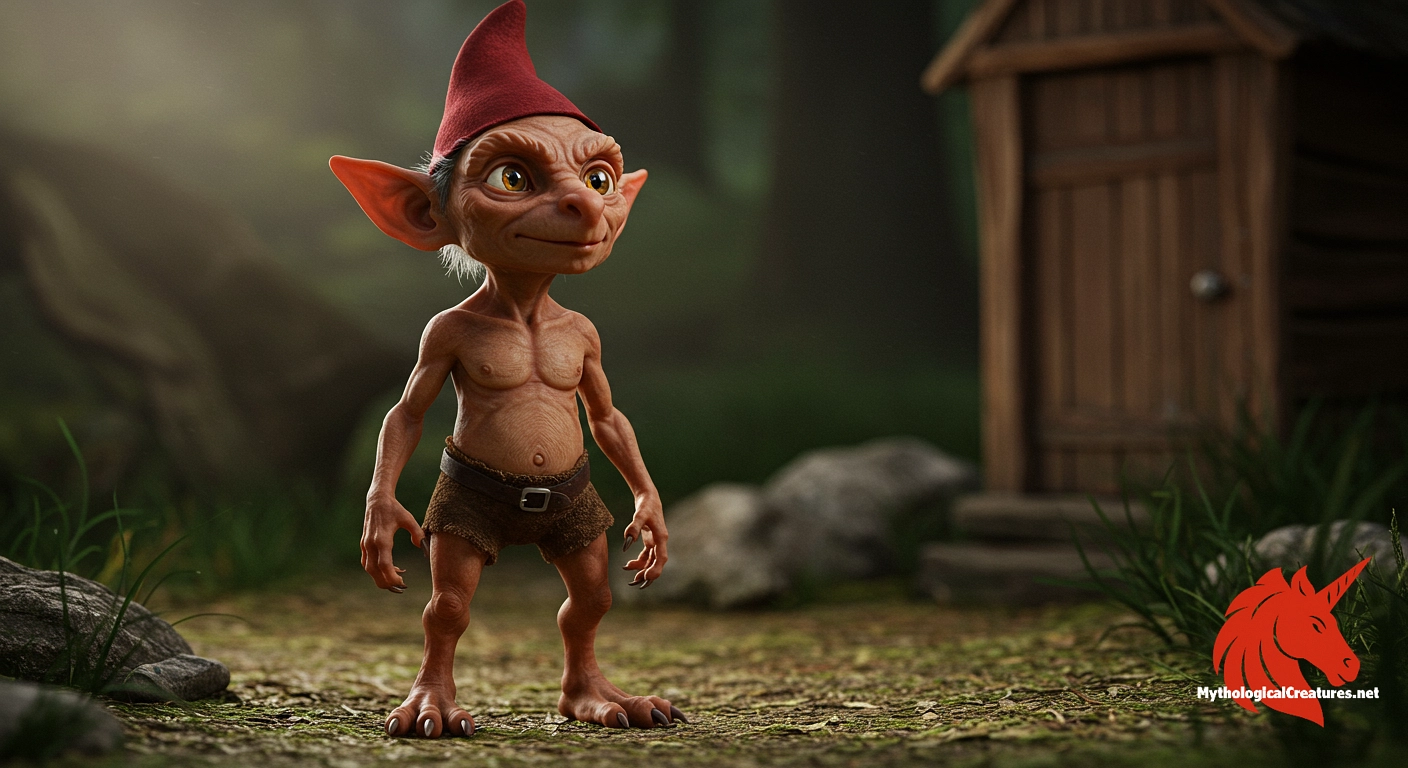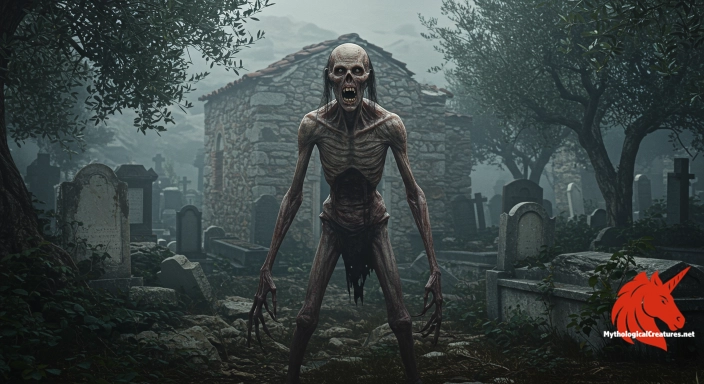Kobold: The kobold is a household spirit from German folklore known for its dual nature of helpfulness and mischief.

Kobold
Kobold - Kobolds embody the duality of domestic benevolence and mischief, serving as both protectors and potential harbingers of misfortune when neglected.
Origins & First Encounters
Kobolds emerge from the vibrant tapestry of German folklore as elusive household spirits, whose presence has both enchanted and unsettled their human hosts over centuries. Their origins weave through the historical landscape of medieval Germany, where everyday life was intertwined with the unseen energies of the natural world. Often envisioned as guardians of the home, these beings have come to represent a delicate balance between care and caprice. Early accounts depict them as dutiful yet unpredictable entities, offering domestic help while retaining a mischievous streak. They became integral to communal narratives, symbolising the dual nature of benevolence and retribution. The kobold’s mythic essence reflects a culture where the mundane and the magical coexisted in intimate relation. Their evolving role—from helpful aides in kitchen or mine to nascent tricksters demanding respect—mirrors changing societal values towards the unseen. Even today, the kobold’s legacy persists as a fascinating emblem of the liminal spaces between order and chaos.
Source Texts & Tale Variants
Ancient texts and oral traditions have long provided the substratum for the kobold myth, with numerous manuscripts and regional accounts offering divergent portrayals. Various folklore compilations detail these sprites in household settings as well as in the subterranean depths of mines, providing a rich array of narrative variants. In some records, the kobold is intricately linked with the domestic sphere, where small offerings such as milk are extended in hopes of securing their favour. Other accounts describe them as elusive characters in the pages of early literature, whose pranks and kindness alike left lasting impressions on local communities. The tradition of the hütchen or little hat variant adds another layer, where distinctive red caps or fiery visages punctuate descriptions. Tales of the nimble Hinzelmann and the similarly named Heinzelmännchen further illustrate how local names and shapeshifting attributes contributed to the kobold’s multifaceted image. Even within the mine folklore, chronicles speak of an earth-bound spirit who blends seamlessly with the elemental forces of nature. These primary sources, emerging from diverse regions and periods, attest to the enduring ambiguity and appeal of the kobold myth.
Form & Powers
Kobolds are characteristically depicted as diminutive and sprightly figures, whose physical form often mirrors the intimate scale of household and elemental tasks. Their appearance is marked by a delicate, almost ethereal build, with some traditions highlighting a strikingly vivid pointy red cap that distinguishes them from other sprites. In certain portrayals, they present features that suggest a human-like visage, complete with subtle expressions of both benevolence and mischief. Some narratives even describe them as a fleeting shaft of fire with what appears to be a discernible head, invoking a sense of both wonder and danger. Variations in size and shape are common, with some accounts endowing the kobold with the ability to change form—assuming animalistic or even inanimate appearances to suit its purpose. Such physical versatility not only underscores their magical nature but also the blending of human and elemental characteristics. The interplay of shadow and light in their depictions reflects a dual quality, suggesting that while their forms may sometimes appear harmless, they hold the potential for a darker, retributive presence. These intricate visual details continue to captivate the modern imagination, making the kobold a compelling subject for artistic reinterpretation.
Regional Faces
The identity of the kobold undergoes notable variations as it migrates across different regions of German-speaking Europe. In Northern Germany, for instance, the kobold finds close kinship with beings like the nisse or puk, whose rustic charm and red caps evoke a sense of folkloric familiarity. Meanwhile, in pockets of Bavaria and Franconia, kobold characteristics are intermingled with those of wood sprites or even mine-dwelling spirits, demonstrating a regional fluidity that blurs strict categorisation. Maritime traditions further complicate the portrait, as the Klabautermann aboard ships carries many of the mischievous traits attributed to the kobold, yet is adapted to a life on the unpredictable seas. Local legends often refashion the creature’s temperament—a helpful guardian in one village may become a capricious trickster in another, reflecting the unique cultural and environmental influences of each community. The amalgamation of household, forest, and subterranean attributes in their portrayal is a testament to the adaptability of the kobold myth. Regional storytellers have long adjusted the spirit’s size, form, and even moral alignment, tailoring its role to fit the needs and fears of their locales. Through these adaptations, the kobold remains a dynamic symbol, enriched by the local colour and historical contingencies of every region it touches.
Cultural Parallels
When juxtaposed with similar figures from other European traditions, the kobold reveals surprising parallels and subtle distinctions. Much like the Scottish brownie or the Irish leprechaun, these household sprites display an enduring blend of helpfulness and trickery, serving as both a blessing and a cautionary presence. The Scandinavian tomte or nisse, with its own set of domestic responsibilities and occasional pranks, mirrors the dual nature of the kobold in both form and function. Such cross-cultural comparisons highlight how small, often unseen beings articulate a deep-seated human need to explain and negotiate the mysteries of everyday life. In some traditions, influences from the elemental gnome and even the whimsical Puck further expand the kobold’s mythic family, blurring the lines between a domestic spirit and an earth elemental. This rich tapestry of folklore underscores the universality of beliefs about unseen guardians and tricksters, weaving a common thread through disparate cultural narratives. Although their appearances and specific attributes may vary, these creatures collectively embody the tension between benevolence and retribution found in many local myths. Analysing the kobold alongside its cultural counterparts unravels not only shared mythological themes but also diverse interpretations shaped by regional experiences.
Legacy & Modern Evolution
The narrative of the kobold has journeyed from the dim candlelight of medieval hearths to the digital canvases of modern fantasy, attesting to its enduring allure. Over the centuries, representations of the kobold have shifted from cautionary household spirits to whimsical characters imbued with both charm and a hint of menace. In historical contexts, they served as living reminders of the delicate balance between human endeavours and the capricious forces of nature. As society transformed through industrialisation and modernisation, the kobold evolved into an archetype that resonates with contemporary quests for meaning in the supernatural. Modern reinterpretations, particularly in role-playing games and fantasy literature, portray them as crucial players in enigmatic, often humorous narratives. These adaptations have not only reimagined the kobold’s physical traits and behaviours but have also amplified its cultural symbolism as a mediator between the seen and unseen worlds. Today, the kobold stands as a multifaceted emblem—both a relic of pre-industrial mysticism and a vibrant character in modern popular culture. Its historical evolution, marked by continuous reinvention, ensures that the kobold remains a perpetually intriguing figure in the ever-expanding landscape of myth and legend.
Interesting Fact
Despite their mischievous nature, kobolds have enduring cultural significance and are frequently featured in modern media, from literature to video games, as embodiments of the mysterious and unpredictable spirit of folklore.
Quick Creature Info
Origin:
Associations:
Our Mythic Legendary Rating:

Also Sometimes Known As:
Habitat:
Supernatural Powers:
Physical Attributes:
Abilities:
Behavior:
Weaknesses:
Lore:
Related Creatures, Tales or Lore
- BBrownie
- DDomovoi
- HHobgoblin
References
Discover Another Mythical Legend You May Not Have Heard Of?
Uncover the mysteries of ancient folklore and expand your knowledge of legendary beings from cultures around the world.
Dare to Meet the Vrykolakas....
Mythical Disclaimer: The images and data on this site are derived from various historical and literary sources, but we have found that many myths often have multiple versions and interpretations across references, sometimes contradictory. As a result, these creature depictions are artistic interpretations—imaginative blends of folklore, legend, and a dash of AI guesswork. Because creature descriptions vary widely, our illustrations and accompanying information represent our best effort to honor mythology while bridging creative gaps. Enjoy these interpretations—just remember, we've done our best to respect the stories and validate available data, but in the realm of mythology, details often shift, imagination leads the way, and nothing is ever set in stone!
Curated by the Mythological Creatures Team (rev. May 2025)
